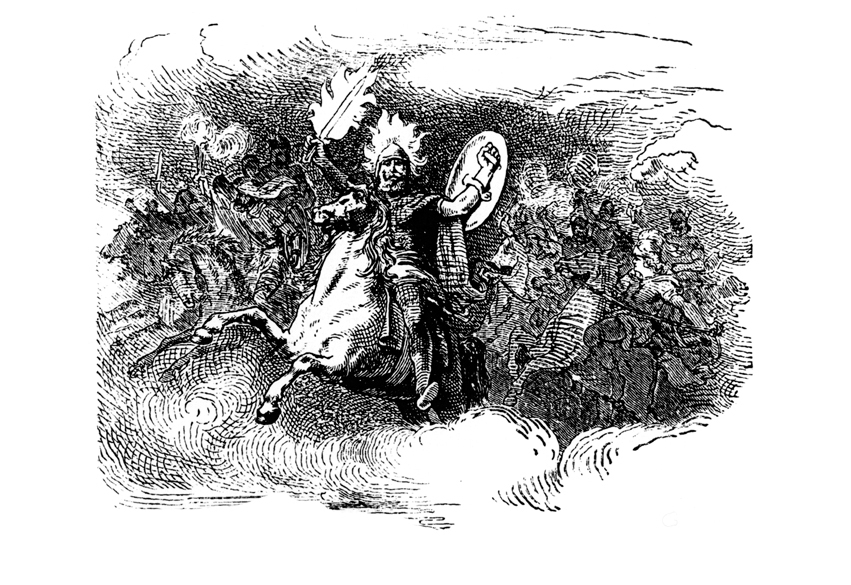In an appendix to this powerfully poetic and beautifully produced little book, A.S. Byatt explains that when Canongate invited her to write a myth, she knew immediately which one to choose: the myth of the Icelandic sagas and Wagner’s operas — ‘Ragnarök: the myth to end all myths, the myth in which the gods themselves were all destroyed.’
When she began, she realised that she was writing for her childhood self, and the way she thought about the world when she first encountered the myth in her mother’s old copy of Asgard and the Gods, acquired as a crib for exams in Old Icelandic and Ancient Norse: ‘a solid volume, bound in green, with an intriguing, rushing image on the cover, of Odin’s Wild Hunt’. So she introduced to her story about ‘the old Germanic world’ the figure of the ‘thin child in wartime’ — herself, aged three when the war began — growing up in the north of England, Viking country, while modern Germany dropped bombs from the sky.
Byatt thus does lots of things at once in Ragnarök. Mainly she retells the stories of the savage and implacable Nordic gods, Odin, Thor and Loki, of giants, dwarves and monsters, of Valhalla and the hairy tree Yggdrasil, in a crunchy alliterative style reminiscent of Ted Hughes: ‘Beetles were busy in the bark, gnashing and piercing, breeding and feeding, shining like metals, brown like dead wood.’ Though undeniably, unavoidably appropriate, it is a rather exhausting style at first, heavy with dolorous whimsy, but one soon grows used to it, and as the stories gather momentum it becomes increasingly vivid and thrilling.
She also recalls and recreates the ‘intense, uncanny pleasure’ of childhood reading, and meditates on the nature of reading, and writing, and on the differences between myth, fairytale and religion. She remembers Bunyan, and Hans Christian Andersen, and the stone church where she learnt about gentle Jesus and ‘a grandfatherly figure who resented presumption’, and ‘felt rude not to believe’. She preferred the stories of Asgard, which seemed to her far more alive, and appropriate to the times. And she still does.
The Norse gods strike her as peculiarly human, in their cleverness, stupidity, greed and cruelty, and her imagining of their world and its end is ‘haunted by the imagining of a different end of things’, of the way in which we are now ‘bringing about the end of the world we were born into’. The death-ship Nagflar, for example, which is made of dead men’s nails, has become for her an image of ‘what is now known as the trash vortex, the wheeling collection of indestructible plastic in the Pacific, larger than Texas’.
Ragnarök brilliantly combines a re-telling of ancient stories — which I recall as repellently alien, but are here magically mysterious — with fascinating fragments of literary autobiography and an urgently suggestive parable. And as an additional treat it includes a number of the marvellous steel engravings that illustrated Asgard and the Gods.






Comments